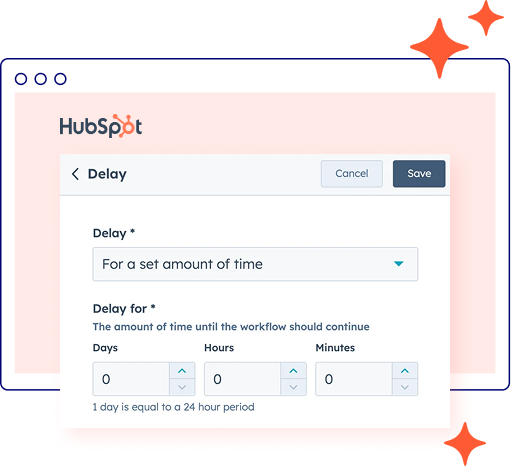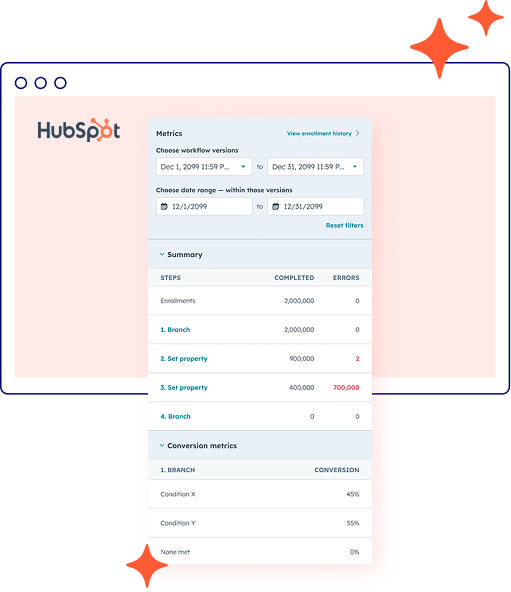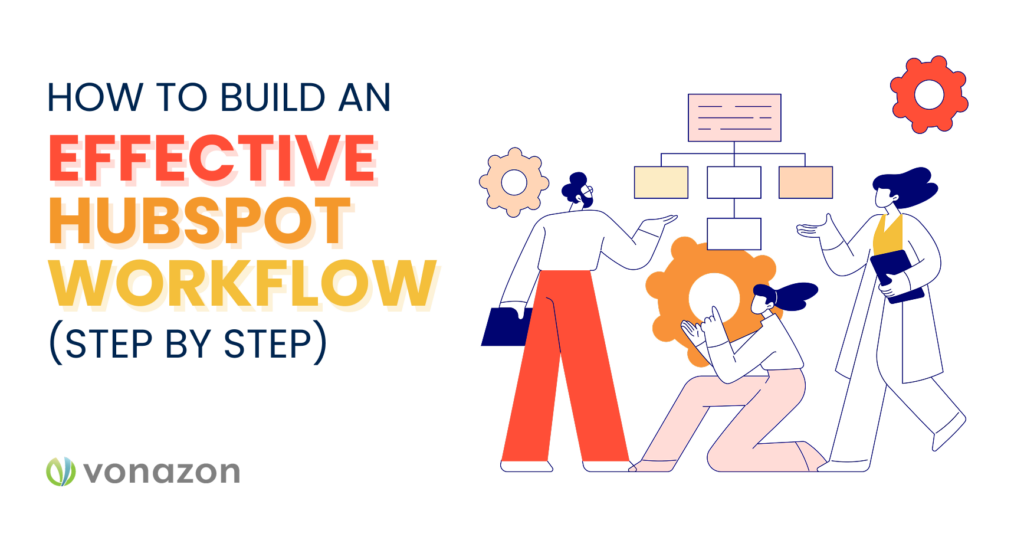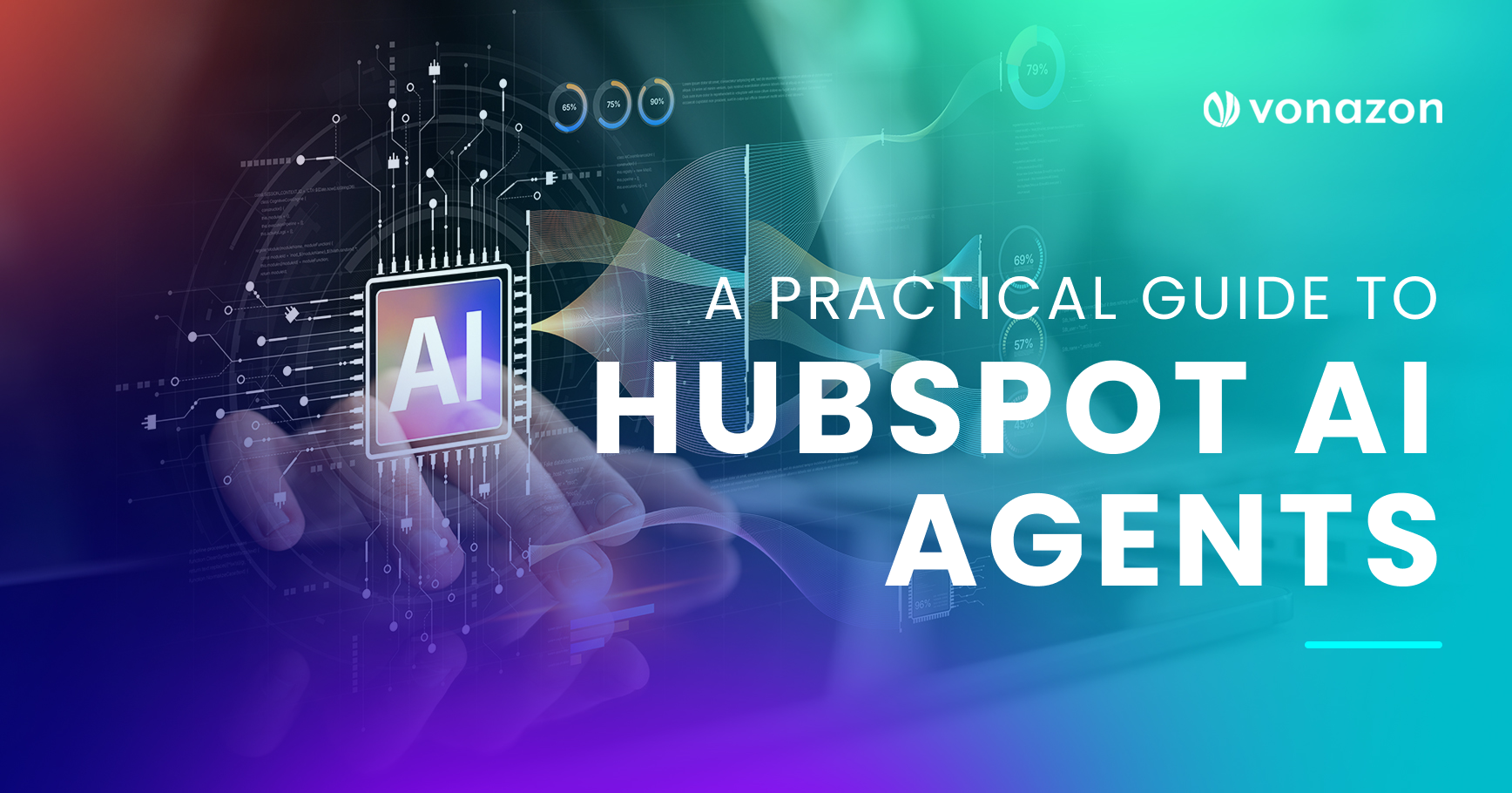How to Build an Effective HubSpot Workflow (Step by Step)
If you’re using HubSpot and not taking full advantage of workflows, you’re basically driving a sports car in first gear. HubSpot workflows are the automation powerhouse behind streamlined marketing, sales, and customer service efforts. They help businesses automate repetitive tasks, improve efficiency, and nurture leads at every stage of the buyer’s journey, all without lifting a finger.
In this guide, we’ll break down how to build an effective HubSpot workflow step by step, so you can turn manual processes into seamless automation that drives results.
What Is a HubSpot Workflow?
A HubSpot workflow is an automation tool that triggers actions based on certain conditions. Think of it as setting up a domino effect where one action leads to another, ensuring that leads, customers, and internal teams get the right message or task at the right time.
Types of HubSpot Workflows:
-

Contact-based Workflows
Triggered by contact properties, like form submissions or lead score changes.
-

Company-based Workflows
Focused on company data rather than individual contacts.
-

Deal-based Workflows
Automate actions based on deal stages, like sending follow-ups for stalled opportunities.

-

Ticket-based Workflows
Used for customer service automation, such as routing support tickets.
-

Quote-based Workflows
Help manage quote approvals and follow-ups.
-

Conversation-based Workflows
Automate actions based on chatbot or live chat interactions.
Now that we understand the basics of HubSpot workflows, let’s build one from scratch.
Step 1: Define Your Goal
Before diving into HubSpot, get crystal clear on what you want to achieve. A workflow without a goal is like a GPS without a destination, you’ll end up wandering around aimlessly without getting anywhere.
Start by asking yourself, what problem am I solving? Are you looking to automate lead follow-ups, create a structured customer onboarding sequence, or perhaps re-engage cold leads who haven’t interacted in a while? Understanding the core issue will help you design a workflow that serves a real business need rather than just automating for the sake of automation.
Next, determine who this workflow is for. Are you targeting individual contacts in your CRM, specific companies with customized messaging, or active deals that need a push to move forward? Identifying the right audience ensures that the workflow is built with the correct triggers, actions, and personalization elements.
Finally, define the desired outcome. What should happen by the end of the workflow? Should a lead be nurtured through a series of emails and then passed to sales for follow-up? Should a deal move through the pipeline to a closed-won status? Should customers complete an onboarding sequence to ensure product adoption? Knowing what success looks like helps you shape a workflow that delivers measurable results.
For example, if your goal is to nurture new leads who download an eBook, you might set up a workflow that automatically sends a series of three emails over two weeks. These emails could include additional resources, case studies, and a final CTA encouraging the lead to book a consultation.
With a clear goal in place, you’re now ready to move forward and start building a workflow that works for your business.
Step 2: Choose the Right Enrollment Trigger
The enrollment trigger is what sets your workflow in motion. In HubSpot, triggers can be based on contact properties, actions, deal stages, and more.
To set this up:
- Navigate to Automation > Workflows in HubSpot.
- Click Create Workflow and choose the type (contact, deal, etc.).
- Select “Start from Scratch” or use a pre-built template if you want a head start.
- Add an enrollment trigger, such as:
- A form submission (e.g., “Contact submitted the eBook download form”)
- A list membership (e.g., “Contact is added to the ‘Marketing Qualified Leads’ list”)
- A deal stage update (e.g., “Deal moved to ‘Proposal Sent’ stage”)
- A page view (e.g., “Contact visited the pricing page”)
- A manual trigger (for workflows that require manual enrollment)
Pro Tip
If your workflow involves leads moving through a funnel, consider using list-based triggers to ensure only the right people enter at the right time.
Step 3: Build the Workflow Actions
Once a contact is enrolled, the magic starts to happen. HubSpot workflows can automate a variety of actions, such as:
Sending an email sequence
Assigning a task to sales
Changing lead status or deal stage
Adding a contact to a list
Sending an internal notification
Delaying actions based on timing or behavior
Example: Lead Nurturing Workflow Actions

Send a thank you email
for downloading an eBook.
Send a follow-up email
with a related blog post.
Assign a task for sales to
follow up if the contact
hasn’t engaged.
If the lead opens previous
emails, send an offer for a
free consultation.
If there’s no engagement,
enroll them in a
re-engagement workflow.
Step 4: Set Up Delays for Timing Optimization
Timing is key when executing effective workflows, and that means not every action should fire immediately. Sending an email or triggering a follow-up task at the wrong time can lead to missed opportunities or, worse, an overwhelmed contact who disengages entirely. HubSpot allows you to control timing strategically by incorporating delays that help guide prospects through the customer journey at a natural, engaging pace.

One way to manage timing is through time delays, which simply pause an action for a set amount of time before proceeding. For example, after a lead downloads an eBook, you might wait three days before sending a follow-up email with related resources.
Another approach is behavior-based delays, which adjust workflow actions depending on how a contact interacts with previous steps. If a contact opens an email, the workflow can trigger the next step, such as sending a more personalized follow-up or assigning them to a sales rep. If they don’t engage, the workflow can take an alternate path, like sending a re-engagement email instead of moving them forward prematurely.

HubSpot also allows for specific date delays, which are particularly useful for event-driven workflows. If you’re running a webinar, you can schedule an automated reminder two days before the event to ensure attendees don’t forget. Similarly, for post-event follow-ups, you can set a delay to send a thank-you email one day after to maintain engagement while the event is still top of mind.
Step 5: Add Workflow Branching for Personalization
If/Then branches let you customize the journey based on contact behavior to deliver personalization that increases the chances of conversion by delivering the right message at the right time. Instead of treating all contacts the same, these branches allow workflows to adapt dynamically based on engagement levels, actions taken, or signals of interest.
For example, let’s say you’ve set up a lead nurturing workflow. If a lead opens an email and clicks a link, it’s a strong sign of interest. Rather than just sending them another generic follow-up, the workflow can trigger a high-value offer, such as an exclusive discount or an invitation to a consultation.

On the other hand, if the lead doesn’t open any emails, they might need a different approach. Instead of continuing the same sequence, the workflow can move them into a re-engagement campaign. This could include a subject line designed to grab attention or an email highlighting a fresh piece of content that might interest them.
Another key behavioral trigger is visiting high-intent pages, like the pricing page. If a lead navigates to this page, they’re likely evaluating your product seriously. At this stage, it makes sense to notify the sales team to reach out while interest is high.
Step 6: Review & Test Your Workflow
Before setting your workflow live, test it thoroughly to avoid unpleasant surprises. HubSpot provides a “Test” feature, allowing you to see how contacts will move through the process.
Here is a short checklist for testing workflows:

Check for Missing Steps
Make sure there are no gaps in the automation.

Ensure Conditions are Correct
Double-check enrollment triggers and If/Then logic.

Send Test Emails
Verify formatting, links, and personalization tokens.

Run a Few Test Contacts
Enroll yourself and team members to experience the workflow firsthand.
Step 7: Activate & Monitor Performance
Once you’re confident in your setup, it’s time to turn on the workflow and track performance. HubSpot’s workflow analytics provide valuable insights to measure effectiveness.

Start by checking enrollment numbers to ensure the right contacts are entering the workflow. If numbers are lower than expected, review your triggers and list criteria. Next, analyze email open and click rates to see if your content is resonating. Low engagement might mean your subject lines need improvement or your messaging isn’t compelling enough.
Conversion rates are another key metric – are leads moving to the next stage, or are they getting stuck? If drop-off points emerge, consider adjusting the timing, refining your messaging, or adding a more enticing CTA.
If performance isn’t where it should be, optimize the workflow by tweaking emails, adjusting delays, or incorporating more personalization. Small changes can lead to big improvements in engagement and conversion rates.
Workflow Smarter, Not Harder
A well-built HubSpot workflow can save hours of manual work, improve lead nurturing, and help sales teams close deals faster. By following these steps, you can create automation that works behind the scenes, ensuring the right actions happen at the right time.
Start small, test often, and refine your workflows based on real-world performance data. Once you see the impact, you’ll wonder how you ever lived without them.
Need help optimizing your HubSpot workflows? Vonazon’s HubSpot experts can help you build and refine automations that drive real results.
Vonazon’s HubSpot experts can help you build and refine automations that drive real results.






